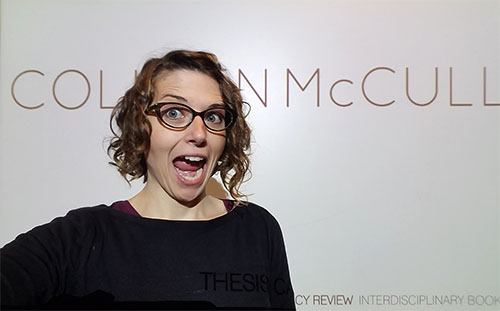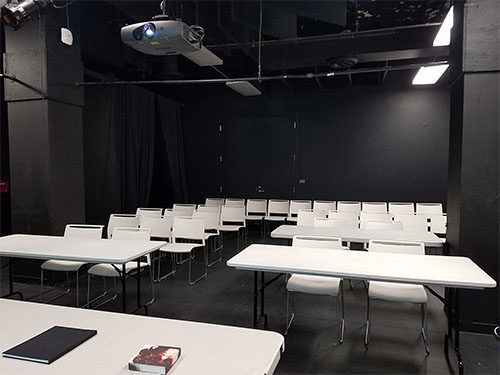
Spring MFA Critiques 2018

All ready and awkwardly waiting to start my critique!
Every spring the Art and Art History Department hosts individual critiques of all first and second year MFA students in the department. It’s a bit of a rite of passage that marks the near completion of another school year. This is my second critique, and it will serve as my Thesis Candidacy Review which means that faculty will convene afterwards to determine if I’m eligible to enter my Thesis year. No pressure.
After many chats with friends in other MFA programs, I’ve found that the format of critiques vary greatly from institution to institution. Even within Columbia College Chicago the structure of critiques is different in every department. The Art and Art History MFA critiques occur over the course of two days and each MFA student is given 40 minutes. Each student spends the first ten to fifteen minutes of their critique presenting their work and the remaining time is open for discussion. The public is welcome to attend and usually there’s 30-40 people in the audience. For my presentation I’ll be showing five completed pieces and one work in progress to help tell the story of how my work has evolved over the course of the year. Since I’m in a research heavy phase, I’ll also be sharing a list of artists and writers I’m looking at.

The calm before the critiques
Last spring I was pretty nervous for my critique and I spent many hours stressing about what exactly to include in my presentation. This year is a bit different. Full disclosure: I did spent my entire spring break working feverishly to finalize pieces and document my work but I haven’t been anxious. I’m looking forward to sharing what I’ve been working on and talking about the new direction my work is headed in. The big unknown with critiques is always how the work will be received by faculty and what feedback you’ll get during the discussion. I’m sure that there will be some positive comments and some constructive criticism of my work, that’s expected because the goal of my work has never been to make everyone happy.
The truth is my practice, like me, is going through some big transitions. I have direction and more focused pieces than I did at last year’s critique but I’m still in process. I’m still figuring everything out and I probably always will be. As humans we are all constantly changing and evolving. In grad school there are so many deadlines and project timelines to consider that it can be easy to feel as though there is some magical end point where things will be decided and certain. In school there are final grades but in reality your artist statement will never be flawless and your next step won’t be crystal clear. As artists, we are engaged in an ever changing dialogue with materials, concepts, and audiences. Uncertainty is a state of being as an artist. Working on my MFA has helped me to understand how to navigate this uncertainty(and illusionary stability) in my practice.
Be sure to check back for Spring Critiques 2018 Part II to see photos and read insights from other Art and Art History graduate students about their critique experience.
